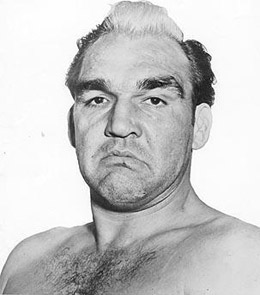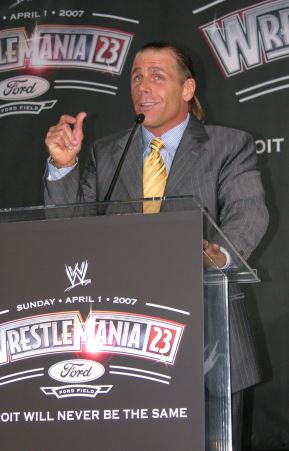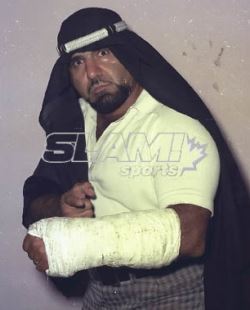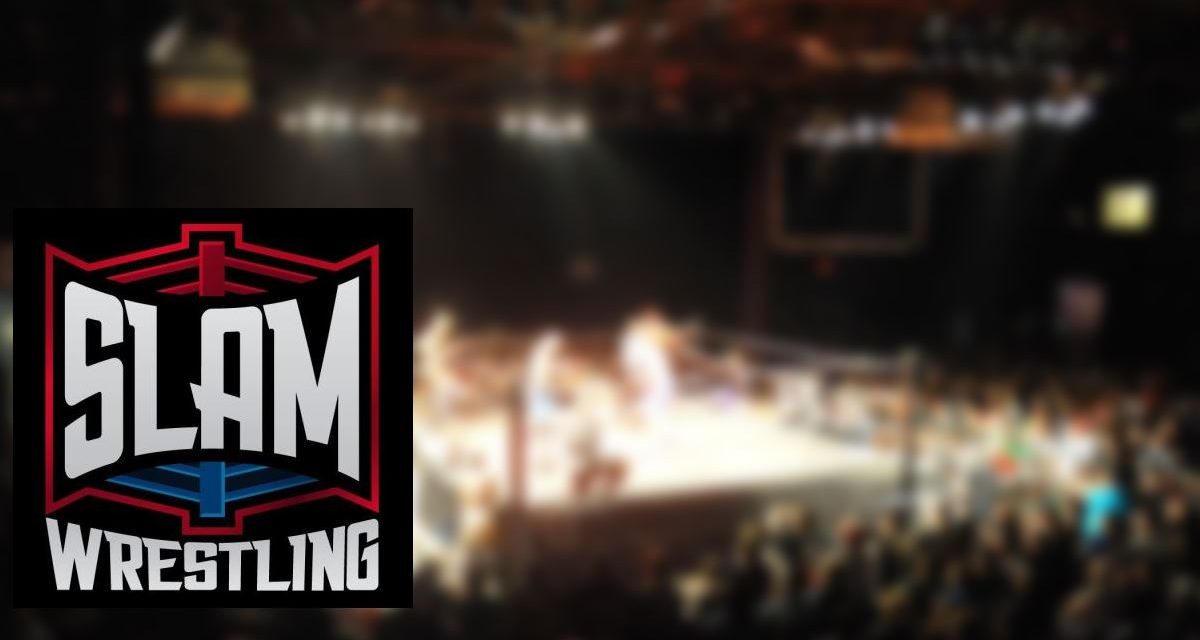Each year, members of the Baseball Writers’ Association of America vote in the new members of the National Baseball Hall of Fame and Museum in Cooperstown, NY. Many of the scribes take a moment to write a column about who they selected and why. Selection to the Professional Wrestling Hall of Fame in Wichita Falls, TX, is set up differently, with noted wrestlers and historians voting on the choices for that year. So here are our thoughts on who we voted for — and why, along with a note about who was actually elected.
STEVE JOHNSON: It’s tough enough to vote for, say, the baseball Hall of Fame, where there are some real numbers to point to. Not so in wrestling, where we run the risk of the “lowest common denominator” argument—i.e., if “X” is in, then “Y” should be in, too. There’s no clear cutoff, so we have to rely on the information we’ve dug up as writers, and the interviews and analysis we’ve collected through the years. But that makes the discussion fun.
PIONEER ERA, 1800-1942
Yvon Robert
Fred Beell
Ruffy Silverstein
“Dirty” Dick Raines
Steve “Crusher” Casey
STEVE JOHNSON: I think Casey is one of the truly forgotten stars, a world champion who came along just before the dawn of TV and thus missed what might have been a huge wave of national popularity. He was a rough-and-tumble brawler from Ireland, where he and his brothers were world class oarsmen. He came to Boston with a $25,000 guarantee. Casey went on to beat a young Lou Thesz for one version of the world title, holding the belt six times in all, including several swaps with Maurice Tillet, the French Angel. A true working class hero, there is a bronze statue of Casey near his birth home of Sneem, Ireland.
I also think Fred Beell belongs as one of the premier wrestlers of the early part of the 20th century, but for now, I’ll vote for Robert. He was another world champion and probably the most important wrestler ever to come from Québec. In Montreal, he was as much of a legend as hockey’s Maurice Richard. Greg is the Robert expert; he had him No. 2 in his Canadians book.
GREG OLIVER: Yeah, Yvon Robert is heads and tails above the rest in terms of legacy. There is no Kevin Owens as WWE Universe champion without Robert. Plus there was his influence on culture in Quebec, which later extended into both hockey and politics.
Like Steve, I picked Steve Casey as my second vote. His resume was impressive and, like Robert, he meant a lot to people outside of wrestling as well. In today’s terms, Ruffy Silverstein was Dolph Ziggler, complete with the great amateur resume, and Dick Raines was Luke Harper — entertaining, larger-than-life but not quite top echelon. As for Beell, he is probably going in one day.
2017 PWHF INDUCTEES: Yvon Robert and “Dirty” Dick Raines

Susan “Tex” Green
LADIES
Debrah Miceli / Madusa
Nikla Roberts / Baby Doll
Trish Stratus
Susan Green
Sandy Parker
STEVE JOHNSON: I’d be more likely to put Nikla in the Colleagues category, as I feel she did her best work as Baby Doll, the valet/manager. Trish could clearly be the favorite here, based on name recognition and the really cool work she did in WWE. But I am going to side with Susan Green, whom I’ve always considered as underrated—male or female. “Tex” was a star from the time she entered the game as a teenager. The women’s division didn’t receive the kind of “diva” attention it does today, which is probably just as well because Green is probably as tough as any crew of divas you want to put together. She held a variety of NWA titles and the politically incorrect Pro Wrestling Illustrated named her “Girl Wrestler of the Year in 1975.” Green also has trained dozens of wrestlers in South Carolina; only the fact that Moolah controlled women’s wrestling for so long prevented her from being the ladies’ breakthrough star.
GREG OLIVER: At the risk of being a curmudgeonly grump, back in the day wrestling was wrestling and not showbiz, yada yada yada. The style that Trish Stratus wrestled was different than what Sandy Parker and Susan Green did. Bridging the gap between the two eras is my vote, Madusa. She was compelling in every organization, from AWA to WWF as Alundra Blaze to WCW where she dumped the WWF’s women’s title in the garbage. Was she technically masterful? No. Was she a brilliant promo? Not especially. But she was solid enough in everything, at a period when women wrestlers hardly got a chance to shine, to deserve inclusion. And Baby Doll is a manager, for the Colleagues category, and even then she’s not getting in.
2017 PWHF INDUCTEE: Susan Green
TAG TEAMS
Ivan & Karol Kalmikoff
Arn Anderson & Tully Blanchard
Jimmy & Johnny Valiant
Red Bastien & Billy Red Lyons
Larry Hennig & Harley Race
STEVE JOHNSON: You can’t go wrong here. We had three of these teams in our top 20 all-time in The Pro Wrestling Hall of Fame: The Tag Teams. The ones that didn’t make that cut were the Valiants, possibly the most well-known tag team in the U.S. during the 1970s, and the Redheads, whom none other than Blackjack Mulligan called “the greatest team of all time.” If you go by strict longevity, the Kalmikoffs come out on top. Ivan and Karol were together for the better part of 10 years before Nikita and then Stan replaced Ivan (Ed Bruce). If you go by market reach, Arn and Tully worked in the national era for WCW and WWF and were stars everywhere, while the Valiants also headlined in Indiana, Georgia, and San Francisco, in addition to their East Coast base. In the end, I voted for the duo that Crusher Lisowski dubbed “The Dolly Sisters.” The combo of “Pretty Boy” Larry Hennig and “Handsome” Harley Race held the AWA world tag title four times, working almost every night as partners from late 1964 until 1969, save a spell when Hennig was recovering from a serious knee injury. They were big guys who could take bumps. Even though Race would become a multi-time world champion as a singles star, he knew he had a good thing going with Hennig. “Had he not gotten hurt, who knows?” he once told me. “We might have stayed together.”
GREG OLIVER: Of all the choices this year, this one was the hardest. Steve lays out so many of the complications in the decision-making process above, and that all went through my mind as I marked my ballot. In the end, I settled for the Valiants — though it’s a bit of a crock that Jerry Valiant doesn’t get a mention. In short, the three-way team idea in WWWF paved the way for the Fabulous Freebirds, who are already in the PWHF. Plus, their unpredictable styles worked in their favour, since none of them were all that big, especially compared to last year’s inductees, the giant Blackjacks, Mulligan and Lanza. I truly think all five teams should be in, but with only one team getting in each year, that might take a while.
2017 PWHF INDUCTEE: Larry Hennig & Harley Race
TELEVISION ERA, 1943-1984
Luther Lindsay
Leo Nomellini
Dutch Savage
Sputnik Monroe
Johnny Weaver
STEVE JOHNSON: To me, this is the weakest of the groups. That might be a function of the way wrestling was in the time period, with stars staying in a territory or two. And it might be that we’ve gotten most of the TV era stars in already.
No one would ever confuse Sputnik with a great wrestler, not even Sputnik. But the way he took the cause of integration upon himself is justification for his election. “The Sweet Man” was a hero to blacks in Memphis, taking up their cause as his own. Imagine in 2016, being fined, as Monroe was nearly 60 years ago, for drinking beer in a black café in Memphis. Social conscience has a place in any hall of fame. Plus, with Sputnik’s penchant for drinking and telling tall tales, the hall will be adding one of the wildest characters figures in wrestling history.
On the same theme, I’ll back Luther (Goodall) Lindsay, the great African-American star of the 1950s and 1960s. Probably only his skin color kept him from extended championship runs; much of his success came in the more racially tolerant Pacific Northwest, where he held the singles title three times and the tag title 10 times. A great shooter as well, he even licked Stu Hart in Stu’s own “Dungeon.” That has to count for something …
GREG OLIVER: I voted for Sputnik for all the above reasons and more. His legacy has lived on in a way that none of the other names have.
2017 PWHF INDUCTEES: Luther Lindsay and Sputnik Monroe

Sputnik Monroe – courtesy Official Website for the Monroes – Sputnik, Rocket, Flash, and Jet

Shawn Michaels was great — just ask him. Photo by Chris Schramm
MODERN ERA, 1985-Present
Eddie Guerrero
Mick Foley
Shawn Michaels
Sting (Steve Borden)
Barry Windham
STEVE JOHNSON: I would think all of these guys will be in at some point. Let’s start with Foley and HBK. Foley really changed the business in a lot of ways, and not just with his literary skills. If you can get past of some of the cornball in his later WWE career, you remember a hardcore risk taker whose elbow drops from the apron brought a vicious reality to wrestling even as it was veering in a cartoon direction. He took bumps no one else would even consider — which might be good or bad, deciding on how you prefer your wrestling. But no one could challenge the impact he has had on the sport.
When motivated and on his game, I thought Michaels was one of the best workers to come down the pike since Buddy Rogers. Now, he wasn’t always motivated or on his game, and I could do without the superkick. But he still ranks as one of the giants of the last quarter-century. He was able to make the conversion from an undersized tag wrestler to a singles performer who could coax the best out of anybody. I think the ladder match at WrestleMania X still stands out to me as a defining moment in the trajectory of matches, no pun intended.
GREG OLIVER: Phew. Setting aside sentiment (Guerrero) and a self-destructive superstar who never quite reached the pinnacle expected of him (Windham), we’re left with Foley, Michaels and Sting. All three will be in one day, but I had to choose only two. This go-round, I chose Sting and Michaels. Sting was WCW’s attempt to create a Hogan-like star that crossed out into the mainstream. Did it work? No, but that shouldn’t be held just against him. His longevity and then reinvention during the Nitro days is a definite boon. Legacy-wise, I suspect that far more wannabe wrestlers saw him and wanted to be Little Stingers, than wanted to be a “Boy Toy” or finger-shooting madman.
Now, that said, Michaels influenced today’s wrestling in style if not attitude, though he had a lot to do with that too, including divas that take their ball and go home (or to UFC). He was by far the best overall performer through the 1990s and deep in the 2000s.
2017 PWHF INDUCTEES: Mick Foley and Shawn Michaels

Both Steve and Greg voted for Skandar Akbar, who did not get in. Courtesy Chris Swisher
COLLEAGUES
Red Shoes Dugan (referee)
Skandor Akbar (manager)
Wally Karbo (promoter)
Lance Russell (announcer)
George Napolitano (photographer)
STEVE JOHNSON: The colleague category is always a bit tricky because there’s no equal ground to compare nominees. How can you measure the contributions of Lance Russell, one of the greatest announcers ever, against the contributions of Wally Karbo as a promoter and co-founder of the American Wrestling Association? It’s a bit of a gut feeling.
So my gut tells me to go with Skandor Akbar (Jim Wehba), and not just because he was from Wichita Falls, home of the PWHF. I’d go with Ak if the hall was in Parts Unknown. A big supporter of our work, I always came away from him having learned something that I didn’t know about wrestling. As a wrestler, his turn on Danny Hodge kicked off a program that propelled Hodge to even greater heights, and Akbar held more than a half-dozen tag belts during his career. As a manager, he had the Middle East heel down pat to the turban. His most famous unit was Devastation Inc., which numbered, at various times, Mick “Cactus Jack” Foley, Kamala, King Kong Bundy, and the Missing Link among others. No matter the wrestler, no matter how outlandish the gimmick, Ak could get them over. That’s in addition to taking guys like Jim Ross and Steve Austin under his wing. Up to his death in 2010, he was involved in wrestling, sharing ideas and stories, and helping young up-and-comers get into the business the right way.
GREG OLIVER: It’s the whole apples to oranges thing here. A referee who worked one territory — Los Angeles, albeit getting decent television distribution, is not the same as one of the industry’s hard-working photographers or a regional promoter who looked after one of the biggest territories by acreage, the AWA. The two that stand out to me are Russell, who was a wrestling announcer far longer than anyone can conceive — he was our industry’s Vin Scully. But, like Steve, Akbar meant more in the long run, and was a big part of the push of World Class Championship Wrestling into the mainstream.
2017 PWHF INDUCTEE: George Napolitano
INTERNATIONAL
Horst Hoffman
Tatsumi Fujinami
Geoff Portz
Leo Burke
Genichiro Tenyru
STEVE JOHNSON: With apologies to the other wrestlers, this comes down for me to a Broadway between Fujinami and Tenyru, and I mean “Broadway” because it’s tough to pick one over the other. They were contemporaries to a large degree. Fujinami was a six-time IWGP champion for New Japan; Tenyru was Triple Crown champion on three occasions. Fujinami is known for the dragon sleeper and the dragon suplex; Tenyru brought his sumo skills to wrestling. Tenyru did tend to jump from promotion to promotion more than Fujinami. Fujinami tended to be in the shadow of his mentor Antonio Inoki for a period. I’ll go with Fujinami on the basis that he was a great junior heavyweight who transitioned to a great heavyweight. As Chavo Guerrero Sr. told us, “There are certain people that you can always have a good match with. Fujinami and I were always thinking together.” But Tenyru would be a good pick, too.
GREG OLIVER: Fujinami for all the above reasons and the run he got in the WWWF when Japanese were usually still villains just because they were Japanese.
I still hate this category, by the way. Leo Burke, while not a Hall of Famer at this level, was an incredible talent that everyone loved to work with, whether in the ring or in the promotion he and his brothers ran in the Canadian Maritimes. I suppose that makes him “international” since, you know, Atlantic Canada is so different from, say, Maine or Vermont. Whatever.
RELATED LINK
Steve Johnson and Greg Oliver are authors of the The Pro Wrestling Hall of Fame series of books. Johnson can be reached at blakeslee_74@yahoo.com and Oliver can be emailed at goliver845@gmail.com, and you can follow him on Twitter @gregmep.

